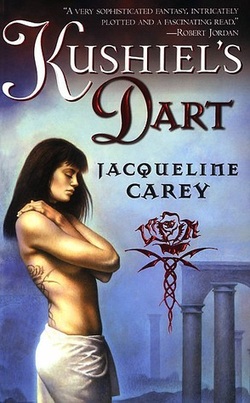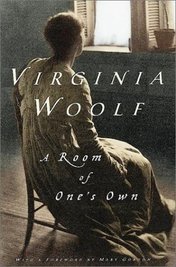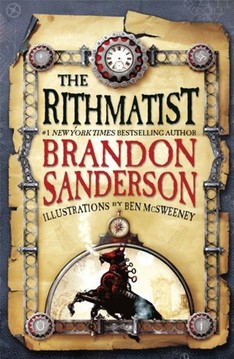
This review is for my second read of this book; I read it first in 2010. Loved it again, though I noticed a few flaws now that I didn’t then—of course, relieved of the suspense, I could dwell more on the actual writing. Still, there was much of literary merit in the book, as well as the enjoyable tale I remembered.
The story takes place in an alternate-universe France, following Phèdre, a young woman trained first at a highly-respected pleasure-house and later at the knee of a political intriguer. From the beginning, though, she is marked out from the other courtesans-to-be by a mote in her eye—the touch of the angel of pain, and a sign that she is an “anguissette,” one who derives pleasure from pain. As she comes of age and begins taking assignments, collecting information from her clients via pillow-talk and delicate manipulations of their emotions, she becomes steadily more embroiled in the conspiracies and machinations surrounding her country’s elite—and when the time comes that she knows too much, she (and her reluctant bodyguard) finds herself the target of more pain than she signed up for.
It is an easy thing, I think, for a book containing BDSM sex scenes to fall either into the "mindless erotica" or "rape glorification" categories of trash. (For example, A.N. Roquelaure/Anne Rice's Sleeping Beauty trilogy I would call "mindless rape glorification".) This book, however, is resoundingly neither of those literary sins. It is far from being mindless or, I'd argue, even erotica—the sex scenes are not nearly as explicit as one might expect, and are far overshadowed by the intricacies of the novel's many plots and subplots. And, though there is nonconsensual intercourse, the main character's reaction to it is to be thoroughly repulsed, even as her masochistic nature leads her to feel pleasure in it. In this way, as in others, the book walks a fine line, but manages to maintain a steady moral compass.
The story takes place in an alternate-universe France, following Phèdre, a young woman trained first at a highly-respected pleasure-house and later at the knee of a political intriguer. From the beginning, though, she is marked out from the other courtesans-to-be by a mote in her eye—the touch of the angel of pain, and a sign that she is an “anguissette,” one who derives pleasure from pain. As she comes of age and begins taking assignments, collecting information from her clients via pillow-talk and delicate manipulations of their emotions, she becomes steadily more embroiled in the conspiracies and machinations surrounding her country’s elite—and when the time comes that she knows too much, she (and her reluctant bodyguard) finds herself the target of more pain than she signed up for.
It is an easy thing, I think, for a book containing BDSM sex scenes to fall either into the "mindless erotica" or "rape glorification" categories of trash. (For example, A.N. Roquelaure/Anne Rice's Sleeping Beauty trilogy I would call "mindless rape glorification".) This book, however, is resoundingly neither of those literary sins. It is far from being mindless or, I'd argue, even erotica—the sex scenes are not nearly as explicit as one might expect, and are far overshadowed by the intricacies of the novel's many plots and subplots. And, though there is nonconsensual intercourse, the main character's reaction to it is to be thoroughly repulsed, even as her masochistic nature leads her to feel pleasure in it. In this way, as in others, the book walks a fine line, but manages to maintain a steady moral compass.


 RSS Feed
RSS Feed





